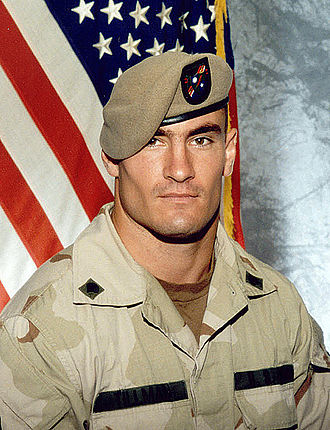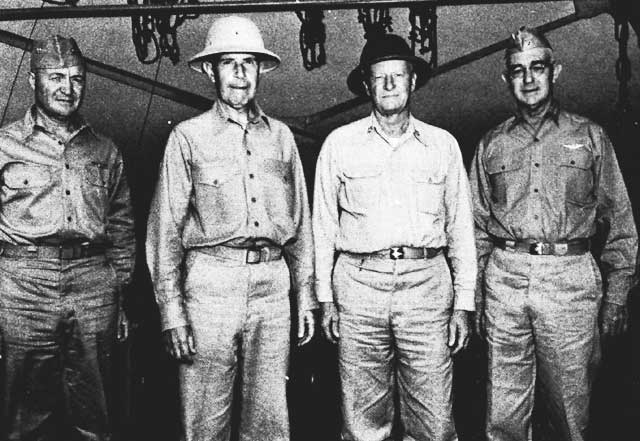
@BoneyAbroad @ReassessHistory @greg_jenner The twin flaws with most histories of the strategic bombing campaigns in WW2 are factually illiteracy & projecting current identity/moral values on people living the 1930's & 1940's.
Two world wars in 21 years makes democratic peoples very bloody minded.
Two world wars in 21 years makes democratic peoples very bloody minded.
@BoneyAbroad @ReassessHistory @greg_jenner And as far as factual illiteracy goes, I have a "bozo filter" resource list on strategic bombing that I use to judge a book's credibility.
1. Richard P. Hallion's "America's Pursuit of Precision Bombing, 1910-1945
2/
1. Richard P. Hallion's "America's Pursuit of Precision Bombing, 1910-1945
2/
@BoneyAbroad @ReassessHistory @greg_jenner 3. Charles W. MacArthur's "Operations Analysis in the U.S. Army Eighth Air Force in World War II"
4. James K. McElroy, Chapter Nine in "Fire and Air War" by the National Fire Protection Association
3/
4. James K. McElroy, Chapter Nine in "Fire and Air War" by the National Fire Protection Association
3/
@BoneyAbroad @ReassessHistory @greg_jenner 5. W.W. Rostow's "Pre-Invasion Bombing Strategy: General Eisenhower's Decision of march 25, 1944
6. " " Waging Economic Warfare from London (The Enemy Objective Unit)
4/
6. " " Waging Economic Warfare from London (The Enemy Objective Unit)
4/
@BoneyAbroad @ReassessHistory @greg_jenner 7. Kenneth P. Werrell's "Blankets of Fire: U.S. Bombers over Japan during World War II"
Of that list McElroy & Rostow's are the most important in understanding the political process by which area firebombing became the face of strategic bombing in 1945.
5/
Of that list McElroy & Rostow's are the most important in understanding the political process by which area firebombing became the face of strategic bombing in 1945.
5/
@BoneyAbroad @ReassessHistory @greg_jenner Both McElroy & Rostow were in the Economic Warfare Division of the US Embassy in London.
James K. McElroy was a National Fire Protection Association fire engineer the US Embassy in London called in to help the RAF Bomber Command in1942.
6/
James K. McElroy was a National Fire Protection Association fire engineer the US Embassy in London called in to help the RAF Bomber Command in1942.
6/
@BoneyAbroad @ReassessHistory @greg_jenner The RAF moved from mostly HE to about 1/2 HE/Incendiary munitions by tonnage in 1942-late 1943. And it was NFPA expert's consultation that had Bomber Harris thinking he could annihilate Berlin the winter of 1943-1944.
7/
7/
@BoneyAbroad @ReassessHistory @greg_jenner The USAAF went to the same HE/Incendiary tonnage percentages as RAF Bomber Command after the Battle of the Bulge in Jan/Feb 1945.
The USAAF went after large nodal German railway marshaling yards in Feb/Mar 1945 -- which were Radar bombed in 8/10 to 10/10 overcast --
8/
The USAAF went after large nodal German railway marshaling yards in Feb/Mar 1945 -- which were Radar bombed in 8/10 to 10/10 overcast --
8/
@BoneyAbroad @ReassessHistory @greg_jenner -- and they went with mass incendiaries...usually 4-lb magnesium bomblets.
The reason given was that these magnesium bomblets could penetrate oil tank cars in railway marshaling yards.
That the "within a 1000 yards of the target" was heavily urbanized was a "happy bonus."
9/
The reason given was that these magnesium bomblets could penetrate oil tank cars in railway marshaling yards.
That the "within a 1000 yards of the target" was heavily urbanized was a "happy bonus."
9/
@BoneyAbroad @ReassessHistory @greg_jenner When you look closely at the Feb 14, 1945 USAAF bombing of Dresden -- and do the payload sums -- you find that 60,000 4-lb IB were placed mostly outside the railyard.
The densely packed USAAF IB patterns overwhelmed Nazi fire defenses far more than the RAF night bombings.
10/
The densely packed USAAF IB patterns overwhelmed Nazi fire defenses far more than the RAF night bombings.
10/
@BoneyAbroad @ReassessHistory @greg_jenner McElroy was the human vector by which the RAF's 1943-44 Berlin fire bombing experience was sent to Gen Arnold in Wash D.C.
General Arnold's plan to firebomb Japanese cities was to the British Admiralty for comment in Jan 1944.
11/
General Arnold's plan to firebomb Japanese cities was to the British Admiralty for comment in Jan 1944.
11/
@BoneyAbroad @ReassessHistory @greg_jenner McElroy said the plan would not work for reasons attached. He got a group of British insurance people knowledgeable of Japanese cities & went to work for three months.
In April 1944 the Admiralty sent their report to the USAAF.
12/
In April 1944 the Admiralty sent their report to the USAAF.
12/

@BoneyAbroad @ReassessHistory @greg_jenner A second copy was forwarded by the the colonel running the operations section of the US Strategic Air Force HQ in England who also thought the fire bombing plan for Japan wasn't going to work.
13/
13/
@BoneyAbroad @ReassessHistory @greg_jenner In August 1944 McElroy & a British fire expert were called to Washington DC to brief General Norstadt with a hand colored fire division map of a Japanese city.
An aide for Hap Arnold was present and after the briefing he wanted Curtis LeMay in the CBI theater to get
14/
An aide for Hap Arnold was present and after the briefing he wanted Curtis LeMay in the CBI theater to get
14/
@BoneyAbroad @ReassessHistory @greg_jenner ...that map by air mail immediately.
Afterward, McElroy trained up a fire analyst for the 20th Air Force operations analysis section and this analyst was sent to his post in Nov 1944.
Any idea that there was a moral break point between Haywood Hansell & Curtis LeMay is...
15/
Afterward, McElroy trained up a fire analyst for the 20th Air Force operations analysis section and this analyst was sent to his post in Nov 1944.
Any idea that there was a moral break point between Haywood Hansell & Curtis LeMay is...
15/
@BoneyAbroad @ReassessHistory @greg_jenner ...utter horses--t.
The political decision to firebomb Japan happened in Jan/Feb 1944, a year before Dresden. Hansell was fire for not obeying orders to carry out that policy.
The story of LeMay doing Tokyo firebombing on his own was how USAAF leadership avoided the...
16/
The political decision to firebomb Japan happened in Jan/Feb 1944, a year before Dresden. Hansell was fire for not obeying orders to carry out that policy.
The story of LeMay doing Tokyo firebombing on his own was how USAAF leadership avoided the...
16/
@BoneyAbroad @ReassessHistory @greg_jenner ...political blow back that "Bomber Harris" got for Dresden.
The dropping of the two Atomic Bombs & Japanese surrender erased any American public qualms about strategic firebombing & weapons of mass destruction for a generation.
17/
The dropping of the two Atomic Bombs & Japanese surrender erased any American public qualms about strategic firebombing & weapons of mass destruction for a generation.
17/
@BoneyAbroad @ReassessHistory @greg_jenner And I guarantee none of that is in Malcolm Gladwell’s Bomber Mafia book.
/End
/End
• • •
Missing some Tweet in this thread? You can try to
force a refresh














